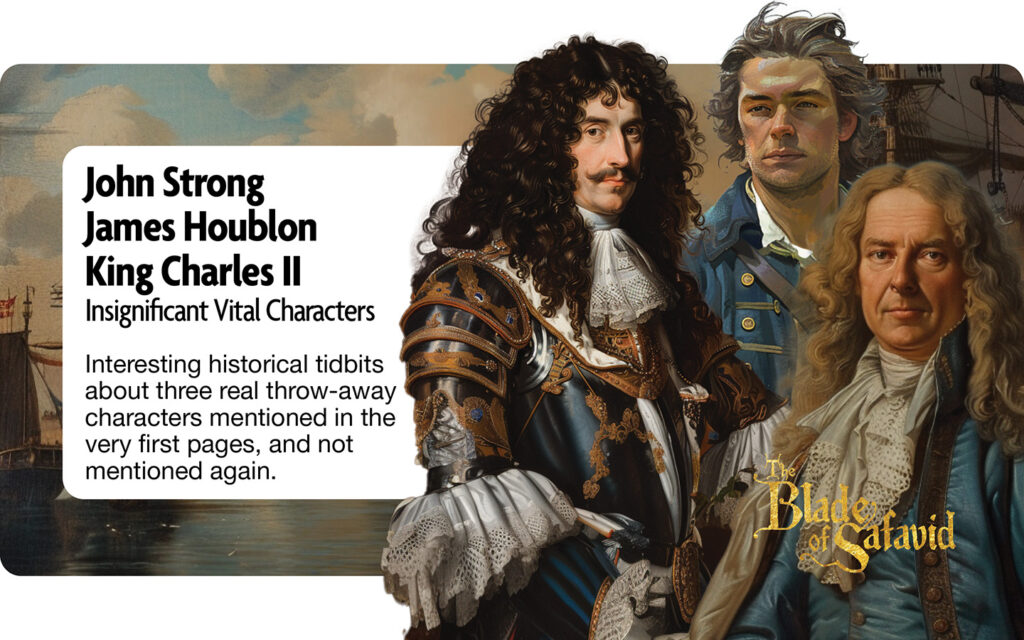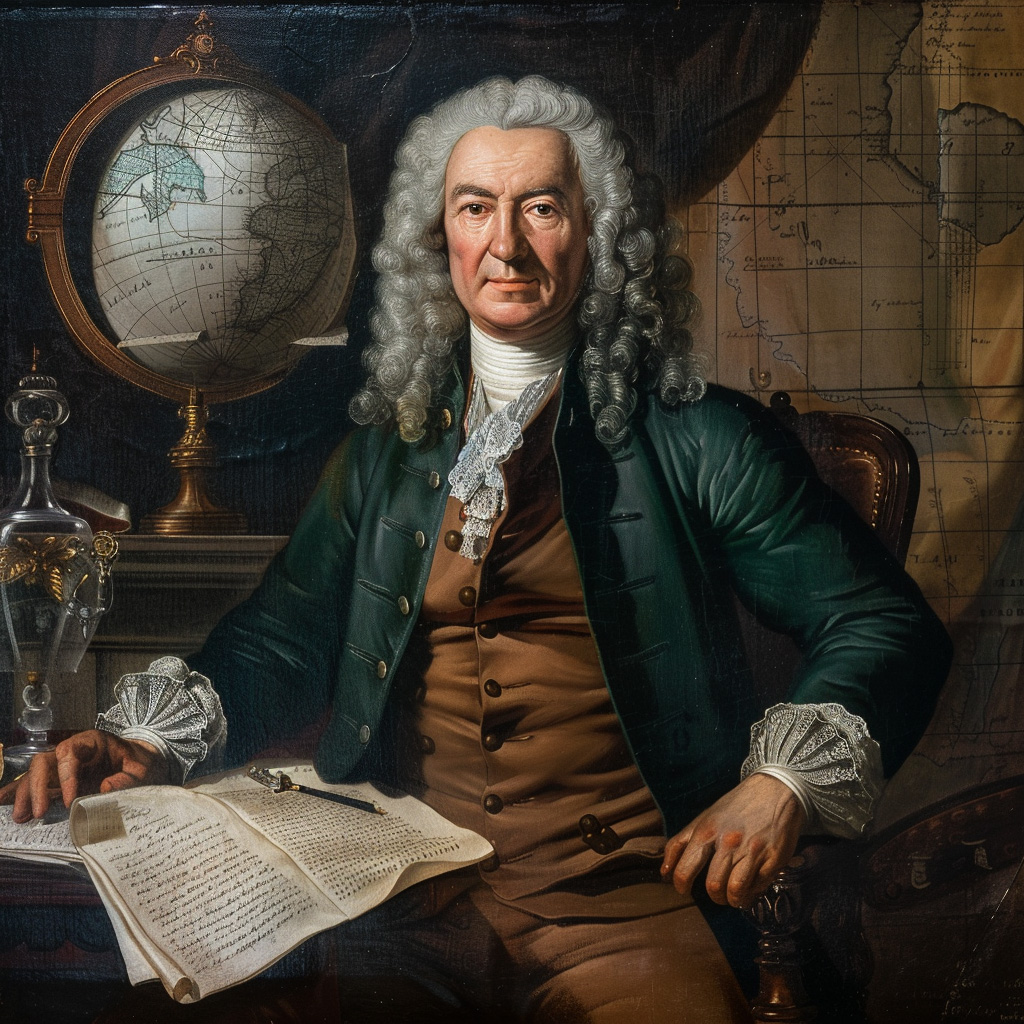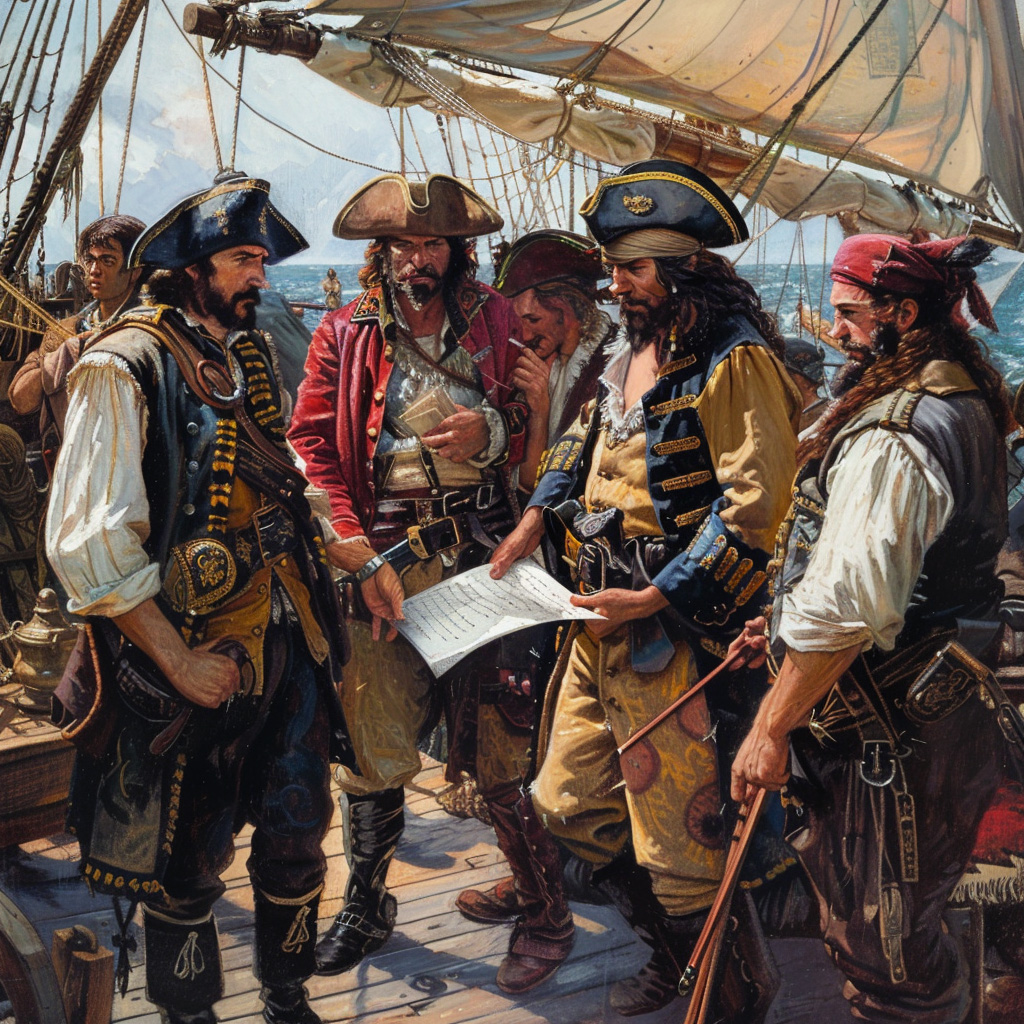
I’m certain nobody really cares about some of the throw-away characters that I casually include in my stories. Well-known authors and editors proclaim loudly I shouldn’t include too much historical backstory because it drags down the action. They’re right, but, and it’s a big but, I find the tiny insignificant characters to be fascinating enough, and their contribution to history essential, I can’t resist at least keeping them in my narrative. So here are some interesting historical tidbits about three real throw-away characters that I mention in the very first pages and are then not mentioned again.
John Strong
John Strong was an English mariner.
During an expedition from London to South America in 1689 about 5 years before The Blade of Safavid begins, he commanded the ship HMS Welfare. On that expedition, he discovered the sound between the two main islands in the Falkland Islands. He named it Falkland Sound after one of the ship’s owners, who was 5th Viscount of Falkland. Later, the name Falkland was adopted for the entire archipelago.
In early 1690, he made the first recorded landing on the Falkland Islands. His expedition also recorded the first sighting of the Falkland Islands wolf. The expedition continued through the Strait of Magellan. I never mention the Falkland Islands wolf in The Blade of Safavid but the wolf was the only native land mammal on the Falkland Islands. Sadly, it became extinct in 1876. It was the first known canid to have become extinct in historical times.
So, what does John Strong have to do with my story in The Blade of Safavid? He was captain of the Frigate Charles II. Captain John Strong died on board the ship on page one. After some trouble with the expedition, Captain Henry Avery, the famous pirate, mutinied, took the ship and renamed it the Fancy.
King Charles II
Charles II the ship’s namesake was King of Spain from 1665 to 1700. He was the last monarch from the House of Habsburg, which had ruled Spain since 1516, neither of his marriages produced children, and he died without a direct heir. He is now best remembered for his physical disabilities, and the War of the Spanish Succession that followed his death.
After his birth, he was entrusted to a royal governess who had a really long name. Mariana Engracia Álvarez de Toledo Portugal y Alfonso-Pimentel. Under her careful supervision, he survived childhood attacks of measles, chickenpox, rubella, and smallpox, any one of which back then was potentially fatal. He also had rickets, which left him unable to walk without help until he was four and he had to wear leg braces until the age of five.
In Spain, there was so much going on politically, economically, and demographically that they had to find ways to pay for the lifestyles of the monarchy. So, Charles contracted with some English privateers to go dig up some loot from the new world. That contract failed and that’s when Henry Avery shows up, and my story The Blade of Safavid is off to the races.
Sir James Houblon
Sir James Houblon led those English privateers in the expedition that led Henry to mutiny.
In the spring of 1693, several London-based investors led by Sir James Houblon, a wealthy merchant hoping to reinvigorate the stagnating English economy, assembled an ambitious venture known as the Spanish Expedition Shipping. The venture consisted of four warships: One of which was the Charles II, named after King Charles II.
These ships were commissioned by Charles to prey on French vessels in the West Indies. Under a trading and salvage license from the Spanish, the venture’s mission was to sail to the Spanish West Indies, where the convoy would conduct trade, supply the Spanish with arms, and recover treasure from wrecked galleons while of course, plundering the French possessions in the area. The investors promised to pay the sailors well: the contract stipulated a guaranteed monthly wage to be paid every six months throughout the deployment, with the first month’s pay paid in advance before the start of the mission. Houblon personally went aboard the ships and met the crew, reassuring them of their pay.
Sir James Houblon was an influential merchant and Member of Parliament for the City of London.
He held appointments in the East India Company. With his younger brother John, he was instrumental in establishing the Bank of England in 1692. He was elected an Alderman of the City of London in 1692 and was knighted shortly afterward.
Yet with all that, his Spanish Expedition Shipping venture went upside down when his group failed to pay the sailors, Captain John Strong died, Henry Avery led a mutiny, and the frigate Charles II was converted into a pirate ship, launching the perfect historical background for The Blade of Safavid.
Obviously the world of medicine in the seventeenth and eighteenth centuries was much different than it is today. And aboard a pirate ship three hundred years ago you might guess it was different than it is today on a modern cruise ship. Maritime medicine has changed.
Back then there were two classes of doctors. First, a physician, treated with respect like we do today, graduated from a university, as did Hinch my surgeon in The Blade of Safavid. And as with Hinch, physicians were gentlemen concerned with knowledge, desiring to learn as much as they could about the human body. When a patient fell ill or was injured, the physician prescribed medicines to assist in the patient’s recovery.
Unique to that time, however, a physician seldom if ever examined or even saw any patients. That was the job of the barber-surgeons, the second class of doctors. Barber-surgeons treated and operated on their patients, but the law restricted them from writing prescriptions. Rather than university training, they acquired their skills through an apprenticeship. Unfortunately for their patients, they performed amputations more than any other surgery. They made much of their money however from bloodletting, lancing boils, and pulling teeth.
A third vocation in the medical field was the apothecaries. (Pharmacists). They mixed medications. These apothecaries would certainly dispense free medical advice to accompany the many pills and purges they would concoct from the many ingredients they kept in the many bottles on their shelves.
It was the Royal College of Surgeons in Scotland that certified upwards of eighty percent of all the doctors. With so few jobs in and around that college, most of these graduates set sail for distant lands. In many cases, pirates attacked their ships and the doctors became pirate surgeons whether they liked it or not – just like with Hinch.
Like with Hinch, a pirate surgeon was not obligated to sign the Articles of Agreement aboard the pirate ship as was required with the rest of the crew. This in many cases saved the surgeon when a pirate ship was captured and his name was not found on the articles. Even though the doctor did not sign the articles they usually received 1 1/4 share of the plundered booty. Compared to a legitimate ship surgeon (a surgeon on a non-pirate ship) a pirate surgeon could earn more. According to one of the more famous early pirate surgeons Alexandre Exquemelin, “a competent salary for the surgeon and his chest of medicaments…usually is rated at 200 or 250 pieces-of-eight.” In today’s money that might be approximately $6,000 to $7,500 per month. (Esquemeling, 60-)
But with today’s inflation, that number could be anything.
I thank Cindy Vallar for her History of Maritime Piracy, here is an additional section of her excellent article about Pyrate Surgeons.
http://www.cindyvallar.com/surgeons.html

